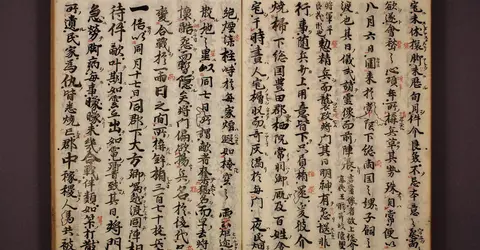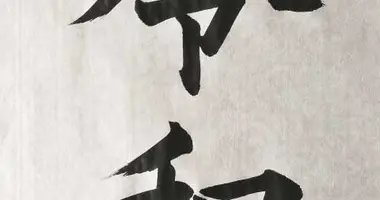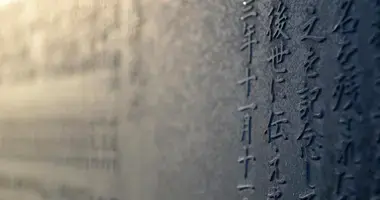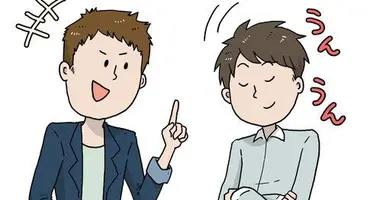Japanese kanji: discover Japan's sinographic writing system
- Published on : 15/01/2024
- by : M.H.
- Youtube

Some handwritten kanji characters
DR
Kanjis are an integral part of the three Japanese writing systems, along with hiraganas and katakanas. Originally from China, they have been adapted to transcribe the Japanese language. Their mastery is essential for reading and writing Japanese, but their number and complexity make them a major challenge for foreign learners.
Origin and evolution of kanji in Japan
Kanjis were introduced to Japan between the 3rd and 5th centuries, via Buddhist and Confucian texts from China. Initially used solely to transcribe classical Chinese, they were gradually adapted to record the Japanese language. Over the centuries, their form, number and readings evolved to better match the linguistic specificities of Japanese.
As early as the Heian period (794-1185), Japanese monks and scholars created the first kanas (hiraganas and katakanas) by simplifying certain kanji. This new syllabic writing system enabled the notation of grammatical particles and inflections specific to Japanese. It developed in parallel with kanji, without replacing them. On the contrary, kanji and kanas end up combining harmoniously in writing.
Characteristics of Japanese kanji
Each kanji generally corresponds to a morpheme, i.e. a minimal unit of meaning. It can have several readings, called on'yomi (Sino-Japanese) or kun'yomi (native Japanese), depending on its use in a word.
For example, the kanji 日 (sun, day) reads nichi or jitsu in on'yomi, but hi, bi or ka in kun'yomi. We find it in the words 日曜日(nichiyōbi, Sunday), 毎日(mainichi, every day), or 日記(nikki, diary).
In Japanese text, kanji are used for radicals (nouns, verbs, adjectives) while hiraganas transcribe grammatical particles and endings. Katakanas are mainly used to write foreign loanwords. This combination of three systems makes for fluid reading and a fine understanding of nuances.
Learn to trace and memorize kanji
The spelling of a kanji is not random: the number, order and direction of strokes follow precise conventions that must be respected. Each stroke must be executed in a single gesture, with a clear beginning and end. Training yourself to reproduce kanji over and over again helps to anchor these seemingly complex characters in your muscle memory.
Mnemonic tricks also help to retain meaning and reading. You can, for example, imagine little stories or associations of ideas based on the graphic elements of a kanji. For example, 森 (forest) is made up of three 木 (tree): logically, a forest is made up of a multitude of trees! These playful techniques, coupled with regular practice, are the keys to progress in kanji memorization.
Contemporary reforms and official kanji
In the 20th century, the Japanese government undertook major reforms to rationalize and limit the number of kanji in common use. In 1946, a first official list of 1,850 characters was published: the tōyō kanji. This was replaced in 1981 by the jōyō kanji, comprising 1945 signs. The latest revision in 2010 brings this number to 2136.
These lists serve as the basis for teaching kanji at school, where Japanese pupils learn 1006 characters in primary school and the rest through to the end of secondary school. They also set out the official spellings, taking into account certain simplifications. Over time, the layout of many kanji has been modernized, reducing their complexity. However, traditional forms are still used for proper names.
Kanji in everyday Japanese life
In Japan, it's impossible to escape kanji: they're everywhere! In books, newspapers, magazines, on billboards, on product packaging... The average Japanese adult masters 3,000 of them, enough to read most everyday texts.
However, some kanji remain difficult to decipher, even for a native speaker. This is particularly true of proper nouns, which often use unusual characters with unexpected readings. If you watch a Japanese TV program, you'll see that the speakers' names are almost always subtitled in hiraganas or katakanas.
After all, many Japanese people today would be hard-pressed to write their first name in kanji without making a mistake! The widespread use of computers and smartphones has led to a loss of memory for the exact layout of characters. A phenomenon that worries some, but that others put into perspective, arguing that the important thing is to be able to read and type kanji, rather than to know how to calligraphy them.
A few examples of common kanji to know
Here are a few of the most useful and common kanjis to learn about this fascinating system:
- 日: sun, day
- 月: moon, month
- 水: water
- 木 : tree, wood
- 火 : fire
- 土: earth, soil
- 人 : person, human being
- 女 : woman
- 男 : man
- 子: child
- 学 : study, science
- 校 : school
- 先 : before, previous
- 生 : life, birth
- 大 : big, fat
- 小: small
- 上: high, upper, go up
- 下: bottom, lower, go down
- 中: middle, in, during
- 山: mountain
Now you know the basics about Japanese kanji. So, are you ready to start learning them? It's a stimulating challenge that will allow you to get to the heart of Japanese language and culture. Admittedly, the road is long and sometimes fraught with pitfalls, but the satisfaction of finally being able to decipher these mysterious characters is well worth all the effort! So grab your hiraganas and katakanas, and head to The Kanji Museum to learn more!











